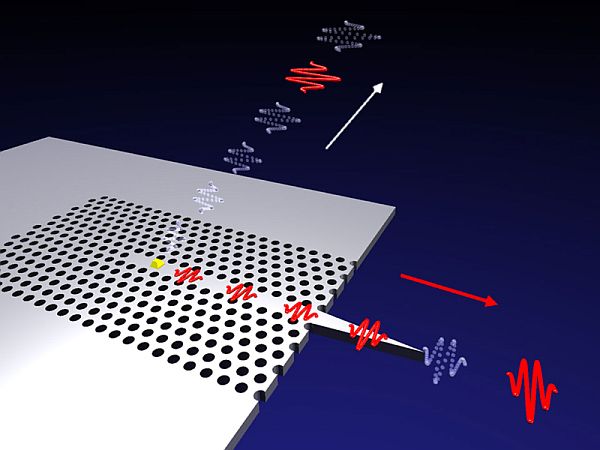Photonic circuits would soon be replacing electronic circuits in the near future of quantum circuits. Since a decade, researchers across the globe were working towards developing quantum circuits but circuits based on light had its limitations however, researchers at the Niels Bohr Institute, Copenhagen have been successful in bringing about the probability.
Quantum level function
Circuitry system rests on performing functions by a steady stream of atoms one at a time and in a specific direction. This phenomenon is quite easy and natural with electrons – the smallest element in the atomic world of electrical current – however, the same function cannot be replicated easily with photons – the smallest atomic unit of light.
The fermion nature of electrons helps them in flowing separately while photon being a boson type of particle prefers to cluster together. Since, quantum communication occurs in the presence of a steady flow of individual element of the atomic world which means a steady stream of photons is required so that single photon travel individually, which is very much unlike its nature.
Peter Lodahl, one of the lead researchers explained that to achieve this prospect, photons were emitted from their fermionic system by creating a powerful interface between light and matter.
Single-photon cannon
The team developed a photon cannon that emitted single photon at a time. The cannon was placed on an optical chip. The chip was composed of tiny photonic crystal, which measured around 10 microns wide by 0.16 microns thick. A quantum dot or light source was integrated in the centre of the chip.
Laser light was then specked on the quantum dot, consequent upon which the electrons got excited, jumped from lower orbit to the higher orbit, and thus released one photon at a time. Generally, light disperse in all directions but the chip was designed in such a way that it made one common channel for passing the photon atoms, explained Søren Stobbe from the team.
The team further expatiated that the new mechanism accounts for nearly 98.4% efficacy in terms of controlling and sending photons in one direction.
With an aim of taking quantum technology to the next level and encrypting complex quantum mechanical problems, the scientists envision to develop a highly efficient single-photon source. And for this they are looking forward to patent parts of their research. No sooner, they take quantum technology to the next step we would witness innovative breakthrough methods to code unbreakable information where complex parallel calculations will be a part of the entire game.
Source: Niels Bohr Institute




